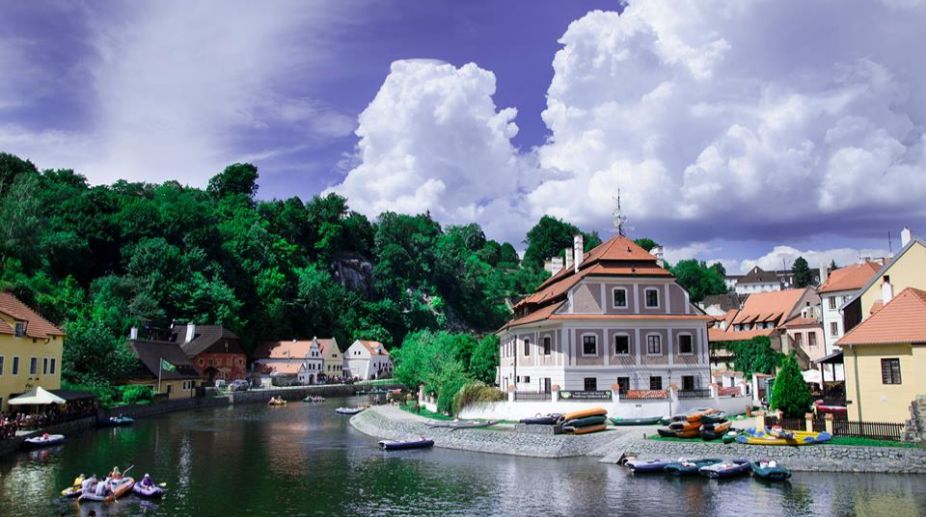Pannun assassination plot: Nikhil Gupta can be extradited to US, rules Czech Republic court
The final decision on his extradition is in the hands of Czech Republic Justice Minister Pavel Blazek.

Bohemian. The dictionary would tell one otherwise but to me, the word spells romance. On my Europe tour, I included Prague on the advice of a globe trotter friend. He rated the historic capital of Czech Republic as the most beautiful city of the continent.
As one reached Prague Central Station from Budapest, the first job was to locate the bus counter to book tickets for Cesky Krumlov, the most romantic town in Bohemia. The 180km journey to the south of Prague, close to the Austrian border, exploring the lovely Bohemian countryside began with roads gently following the natural landscape, passing through pine forests, fairytale chateaux, rural farms, fields, fishponds and villages.
The surrounding was spectacular to say the least. Thanks to the absence of large industrial factories, South Bohemia has a highly-valued landscape, relatively unspoiled, as proven by many preserved areas in the region. The tranquil and romantic landscape with a unique number of historic monuments may delude someone into thinking of the region’s peaceful development. Quite the opposite — many times South Bohemia played an important role in the history of the Czech lands and local events also affected the history of Central Europe.
Advertisement
Fight between landlords led to the foundation of a number of towns and numerous castles and villages. The origins of many local settlements date back to the 13th and 14th centuries.
Each time the bus went past another from the opposite direction, the drivers waved at each other — a local custom. As the skyline became enlivened by the Gothic historical monuments and churches of the Unesco World Heritage town of Cesky Krumlov, it was time to get down from the bus. The excitement was too high as one was about to enter a heritage town. The bus terminus was just outside town as Cesky Krumlov is a car-free zone.
I started the downhill walk towards the hotel, which was near the centre of the old town. The narrow cobbled roads were fringed by 13th and 14th century structures. Situated on the banks of the Vltava River, the town was built around a castle with Gothic, Renaissance and Baroque elements. It is an outstanding example of a small central European medieval town whose architectural heritage has remained intact, thanks to its peaceful evolution over more than five centuries.
As one walked past well-preserved historical buildings and flower bedecked centuries-old residential houses, the entire route was teeming with tourists. This tourist friendly town was the only place in the entire trip, which confirmed our hotel reservation without any advance payments. The hotel had a splendid location. The 16th- 17th century old building with wooden staircase and floors maintained a perfect heritage flavor, albeit with all modern facilities.
The flower-decorated windows overlooking the cobbled roads were so Europe! The greatest surprise that awaited one was the restaurant at the back of the hotel. Overlooking the Vltava River, the 13th century castle complex was just on the other side.
Hours can be spent in that restaurant, looking at the river, the castle, the flow of tourists on the adjoining cobbled roads, and the sail of the canoeists, kayakers or rafters, greeting each other as they meet on their way. But one had miles to travel.
After enjoying Czech delicacies for lunch, we proceeded for the heritage walk. We were in the most romantic town in Bohemia, hidden in the Šumava foothills between the Vltava River’s winding curves. As we walked through the twisting cobbled narrow streets of this old town, listed as a Unesco world heritage site for its artistic and urban values, I was awestruck by the dedication with which the 13th-14th century look of this town is maintained.
No wonder this small town attracts such a huge number of tourists. The historic town is dominated by the castle complex, one of the most extensive in Central Europe. With its tower situated on a rocky promontory, it offers spectacular views of the Old Town below.
The complex consists of 40 buildings and palaces, as well as gardens, courtyards, and a moat. As we were strolling through the narrow cobblestone streets of the Old Town, we walked past more than 300 well-preserved historical buildings, including a church, built in the early 1400s, several noteworthy museums and galleries.
The main road led one to an uphill route. The topography suddenly changed as I crossed over to the new town up the Sumava Hills.
The new town wore a completely new look. Beautiful modern houses with slanting roofs, gardens, flowers on both sides of the road ended at a point, which appeared at the top of a hillock. The panoramic breathtaking view with the hue of the setting sun was mesmerising.
The songs of the home-bound birds were the only sound around. The place is near the shooting spot of the classic, The Sound of Music and has a similar topography.
The enchanting atmosphere made us stretch our hands and hum the famous tune, “The hills are alive with the sound of music… With the songs they have sung for the thousand years… The hills fill my heart with the sound of music.”
Advertisement